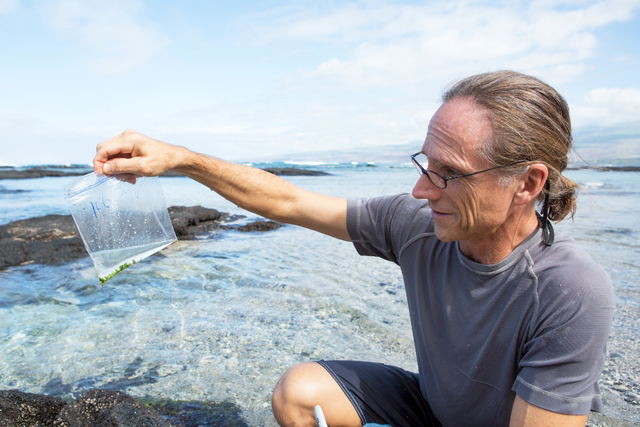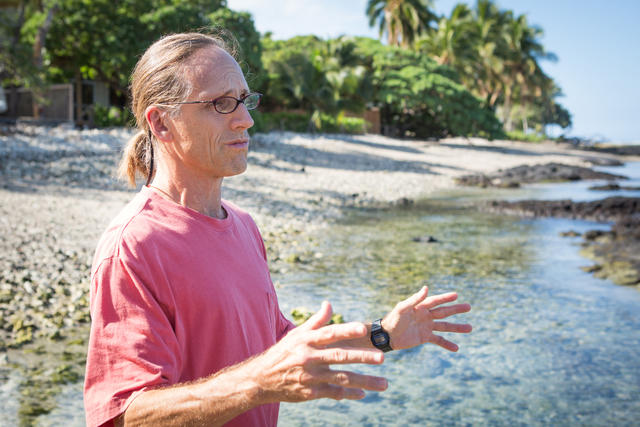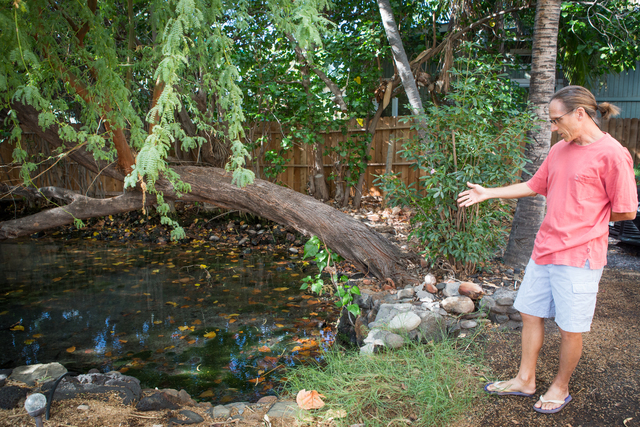A sewage treatment plant is the best option for keeping human waste off a fragile and environmentally significant reef at Puako Bay. ADVERTISING A sewage treatment plant is the best option for keeping human waste off a fragile and environmentally
A sewage treatment plant is the best option for keeping human waste off a fragile and environmentally significant reef at Puako Bay.
That’s according to an engineering report that recommends the treatment plant over the more expensive option of building a sewer line so the community of around 160 homes can connect to a treatment plant at Mauna Lani.
Aqua Engineering, the Coral Reef Alliance and at least half of the community also favor the treatment plant over the installation of individual aerobic treatment units, according to a survey by the alliance.
Dye tracers placed in current sewage disposal systems at Puako entered shoreline waters six hours to three days later, said Jos Hill, who leads Coral Reef Alliance programs in Hawaii and Indonesia. Scientists and the people who live in the low-lying shoreline community have since grappled for a way to keep pollutants out of the reef.
There are an estimated 60 to 70 cesspools along the 2.5 miles of the bay and its south shore area.
Puako resident Karen Anderson said she feels the treatment plant is the best solution with the least burden on homeowners in the long term.
“We want to do what is right for our reef and our community,” said Anderson, who has an engineering background and is a former executive director for the Nature Conservancy in Washington state. “Yes, it will be disruptive up front, but over time it will be really good.”
The trick now is to get the wheels of the state and county regulatory process to turn more quickly in granting the needed approvals for the project to go ahead, Anderson said.
According to the survey, half of the residents favored the treatment plant, which would cost $9 million to build and $134 a month per home over 20 years.
Another 25 percent of respondents were undecided and the remainder favored either installing their own ATUs or hooking up to Mauna Lani, said Hill.
Aqua Engineering says those options would cost residents $300 and $166 a month, respectively, although some residents contest the figures.
“One of the big challenges is the geology of the area, where wastewater is going into the groundwater quickly and the water table is high and in proximity to the ocean,” said Hill.
Coral Reef Alliance oversees and facilitates the Clean Water for Reefs Puako project, which works with the Puako Advisory Committee to involve residents in a solution.
Puako resident Mike O’Toole, a contractor who has installed numerous ATUs, said the county requires a special management area permit for each unit installed.
With regular state-mandated testing of the effluent, the community would know that someone was monitoring all of the wastewater coming out of Puako under the treatment plant solution, he said.
Kohala Rep. Cindy Evans is floating legislation designed to give the residents of Puako a leg up when they are ready to proceed with constructing a treatment plant. House Bill 1852 would make nonprofit organizations eligible for no-interest loans from the Clean Water State Revolving Fund loan program.
The money could be used for the planning, design and construction of the plant.
The bill recently passed the House Committee on Health.





